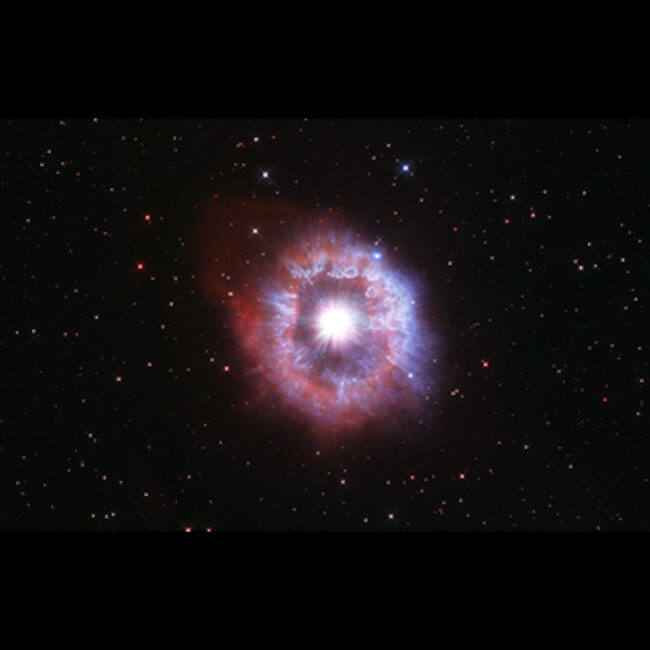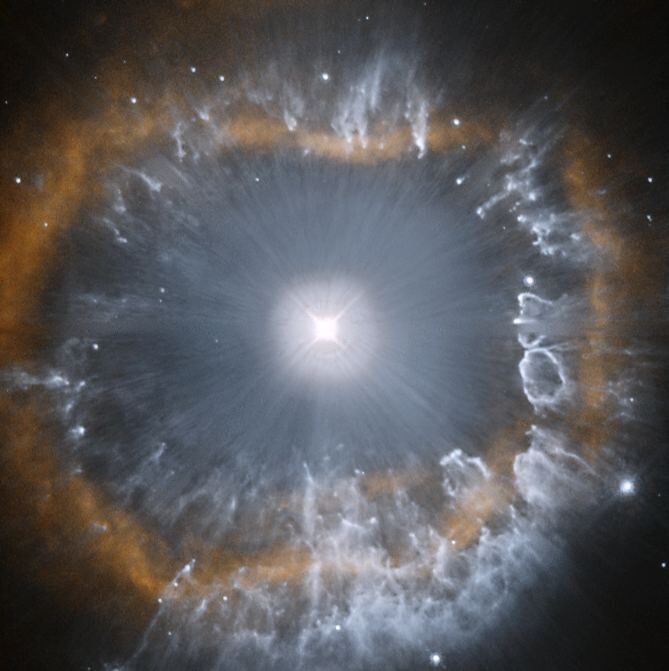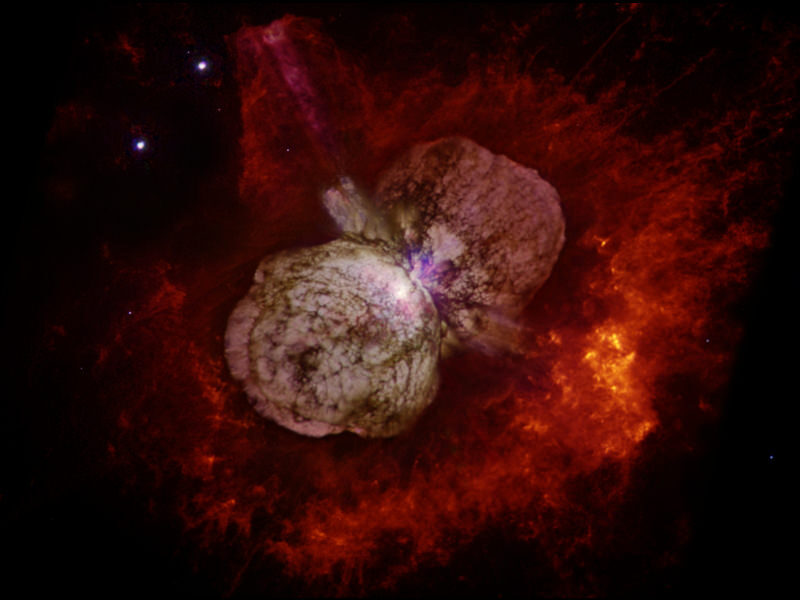
AG Carinae, located appropriately in the constellation Carina, is one of the most luminous stars in the sky, though its apparent brightness on Earth is somewhat diminished give its 20,000 light year distance from Earth. The star is famous for a number of reasons, including that it is one of only 50 known luminous blue variable stars.
Luminous blue variables are extremely short lived and violent, barely balancing between exploding into a supernova and collapsing under its own weight into a black hole. As part of their life cycle, they occasionally emit a spectacular outburst that creates a kind of glowing shell around them, as can be seen in the Hubble image of AG Carinae.
Outbursts like the one in the picture only happen once or twice in a luminous blue variable's lifetime. They occur when radiation pressure from the interior of the star expands it out to such an immense size that it pushes material out of itself, then collapses back into a more stable state for potentially millions of years.

Traveling at up to 670,000 miles an hour, that solar wind is about 10 times faster than the ejecta, creating a "snowplow" effect that clears away some of the area directly around the star. At points around the star, the wind broke through the shall of material and dispersed it even more, as can be seen in the faint red glow in the upper left part of the Hubble image.

The image itself was taken in both visible and ultraviolet light, which allows for a clearer view of the filaments of material surrounding AG Carinae. Hubble isn't only taking pictures just for dramatic effect though. Its in the middle of the largest program in its history, known as the Ultraviolet Legacy Library of Young Stars as Essential Standards (ULLYSES), which focuses on young stars such as the blue luminous variables. With luck, the program might catch one of these ultra-rare stars at its expected end - a shocking supernova blast. If there's one current observational platform capable of capturing such an event in all its glory, its Hubble.



Reader Comments
to our Newsletter